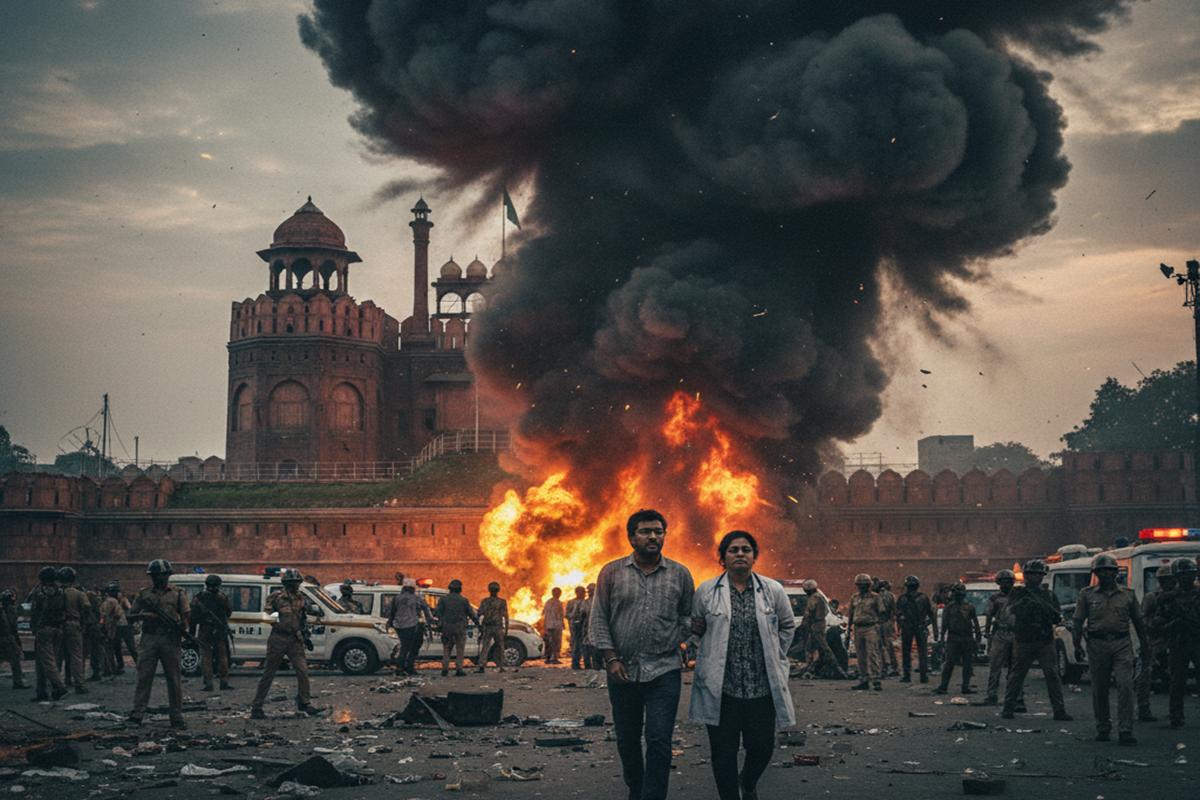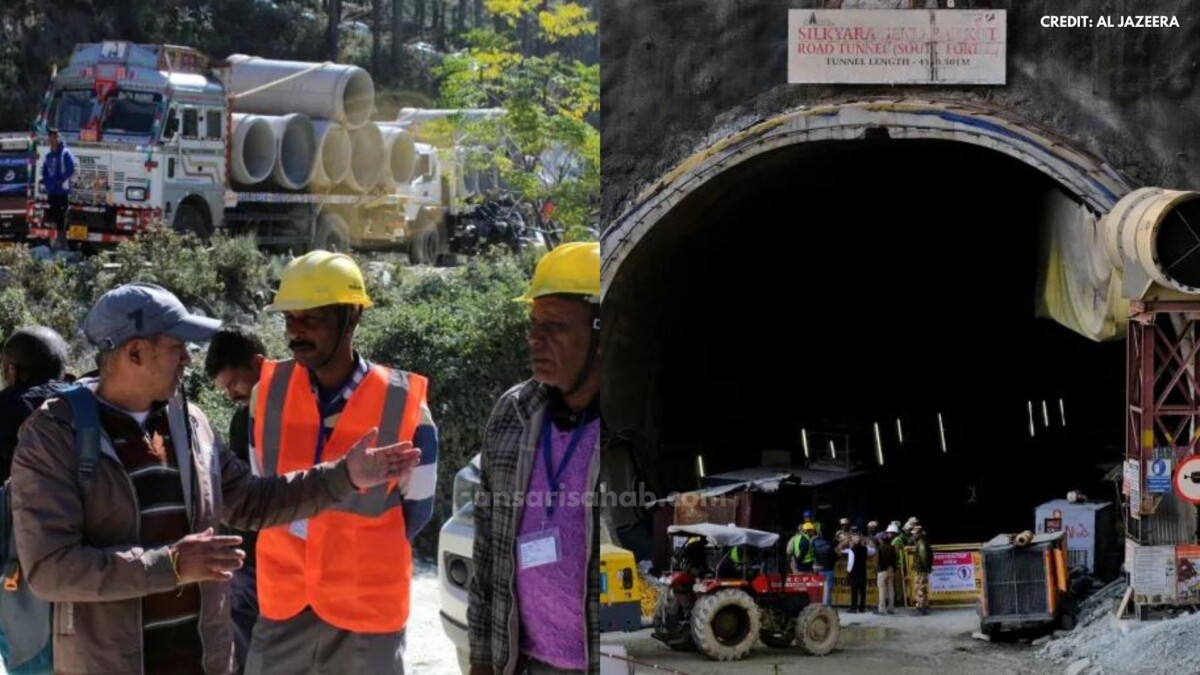New Delhi, 13 November 2025 — The death toll in the horrific car bombing near the Red Fort surged to 13 as India’s anti-terror agencies continue the sweeping investigation into the plot. The probe, officially under the banner of the “Delhi Red Fort Car Explosion Investigations,” has led to the arrest of several doctors believed to be part of a radicalised professional network linked to the militant group Jaish-e-Mohammed. The government has declared a nationwide high alert and vowed stern action.
Blast details and initial findings
On Monday evening, at approximately 6:52 pm IST, a white Hyundai i20 stopped near Gate No. 1 of the Red Fort Metro station in Old Delhi, and abruptly exploded, killing at least eight people initially and injuring more than 20. In the following days, that figure was revised upward to 13, after one of the critically injured succumbed to his wounds.
Early investigative work shows that the vehicle was packed with a powerful explosive load, including ammonium-nitrate fuel oil, and detonated near stationary or slow-moving traffic adjacent to the historic monument.
Terror network, doctor arrests and logistics trail
Central to the Delhi Red Fort Car Explosion Investigations is the discovery of a “white-collar terror module” involving medical professionals and other educated individuals. Officials claim that doctors from the university in Faridabad rented properties where over 2,900 kg of bomb-making material — including ammonium nitrate, detonators and rifles — was seized.
Among the arrested are:
- Dr Muzammil Ganaie (aka ‘Muzammil Shakeel’), a 35-year-old from Pulwama working at Al-Falah University in Faridabad. He allegedly rented storage premises containing explosives.
- Dr Shaheen Saeed (also spelled Shaheena Shahid), a doctor from Lucknow, accused of helping to set up the women’s wing of Jaish-e-Mohammed in India.
- Dr Umar Un Nabi, a doctor from Kashmir believed to have driven the Hyundai i20 that exploded. DNA samples and CCTV footage suggest he perished in the blast.
Police sources say they are also tracing multiple other vehicles—up to 32 cars preliminarily identified—that may have been pre-loaded for a coordinated attack targeting several locations, with the Red Fort blast forming part of a larger plan.
The involvement of an extremist network with cross-border links has been flagged. The module reportedly had contact with handlers based in Turkey and Pakistan, and multiple states’ police forces are coordinating the probe under the federal National Investigation Agency (NIA).
Government response and nationwide security alert
In response to the incident, the Union government invoked the Unlawful Activities (Prevention) Act (UAPA) and has mobilised security agencies across the national capital region and other states. The union Home Minister Amit Shah visited the site and declared that no “angle will be left unexplored.”
Prime Minister Narendra Modi, in his public statement, said all conspirators would be punished and directed forensics, intelligence and law-enforcement specialists to conclude the probe swiftly.
Security has been heightened at major public sites, railway stations, airports and metro systems, especially in Delhi, Uttar Pradesh and surrounding states. Multi-state raids were conducted; over 500 people were detained for questioning across Kashmir and the NCR.
Why the incident matters
The Delhi Red Fort Car Explosion Investigations have major implications for national security, urban resilience and policing strategies in India’s capital. The use of a vehicle-borne improvised explosive device (VBIED) in such a symbolic, densely populated location highlights vulnerabilities in urban security infrastructure—especially near heritage sites and transit hubs.
The involvement of medical professionals and other credentialed individuals in terror logistics raises concerns about radicalisation within white-collar spheres and the ability of organised extremist groups to recruit within professional classes. Experts consider the emerging pattern as challenging traditional profiling strategies.
For ordinary residents and visitors in Delhi, the heightened security presence means more checks, possible disruptions and an urgent reminder of the city’s exposure. The blast also carries potential ripple effects for tourism, heritage-site access and public transport.
What lies ahead in the probe
Investigators will now focus on:
- Completing forensic analysis of explosion samples — the Forensic Science Laboratory has collected over 40 samples, including ammunition and suspicious residue.
- Finalising vehicle ownership tracing: the i20 was sold multiple times over the past decade, complicating the chain of events.
- Inter-state coordination on arrests, especially in Kashmir, Haryana and Uttar Pradesh, to dismantle the terror network.
- Tracking and freezing financial flows, communications with foreign handlers and possible future attack plans.
- Government deliberations on physical security upgrades for heritage and transit-adjacent sites, especially in the NCR.
For readers: what you should know
If you live in or travel to the Delhi region: remain vigilant, comply with security checks, and watch for public advisories at crowded stations and tourist destinations. For professionals in urban sites or heritage zones, the incident underscores the need for updated emergency-response protocols and rapid cooperation with law-enforcement agencies.
For policy watchers and security analysts, the episode represents a potential shift in threat-modus operandi: professional recognisance, urban VBIEDs and cross-border linkages. The conclusions drawn from the Delhi Red Fort Car Explosion Investigations will likely shape India’s counter-terror posture for years to come.









